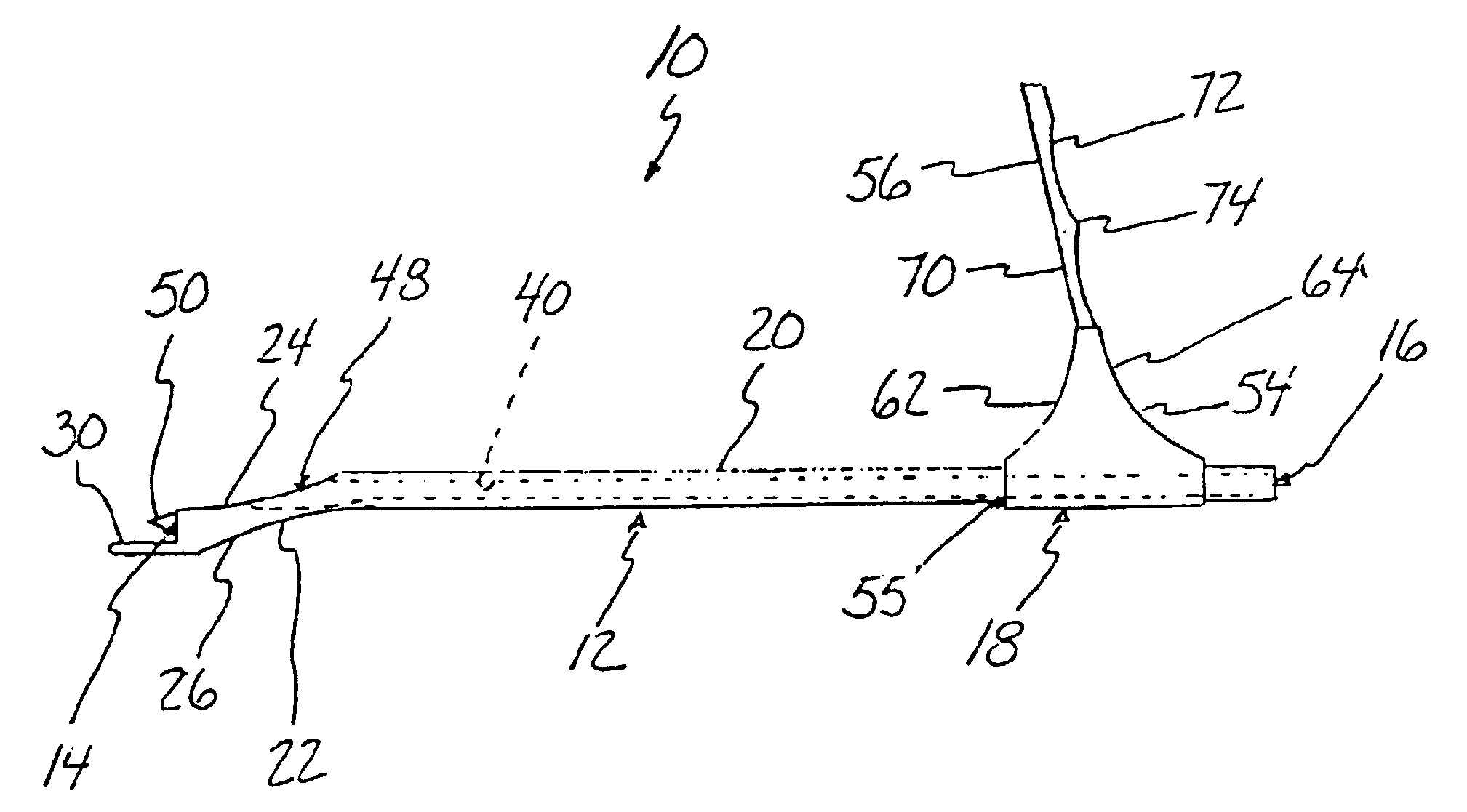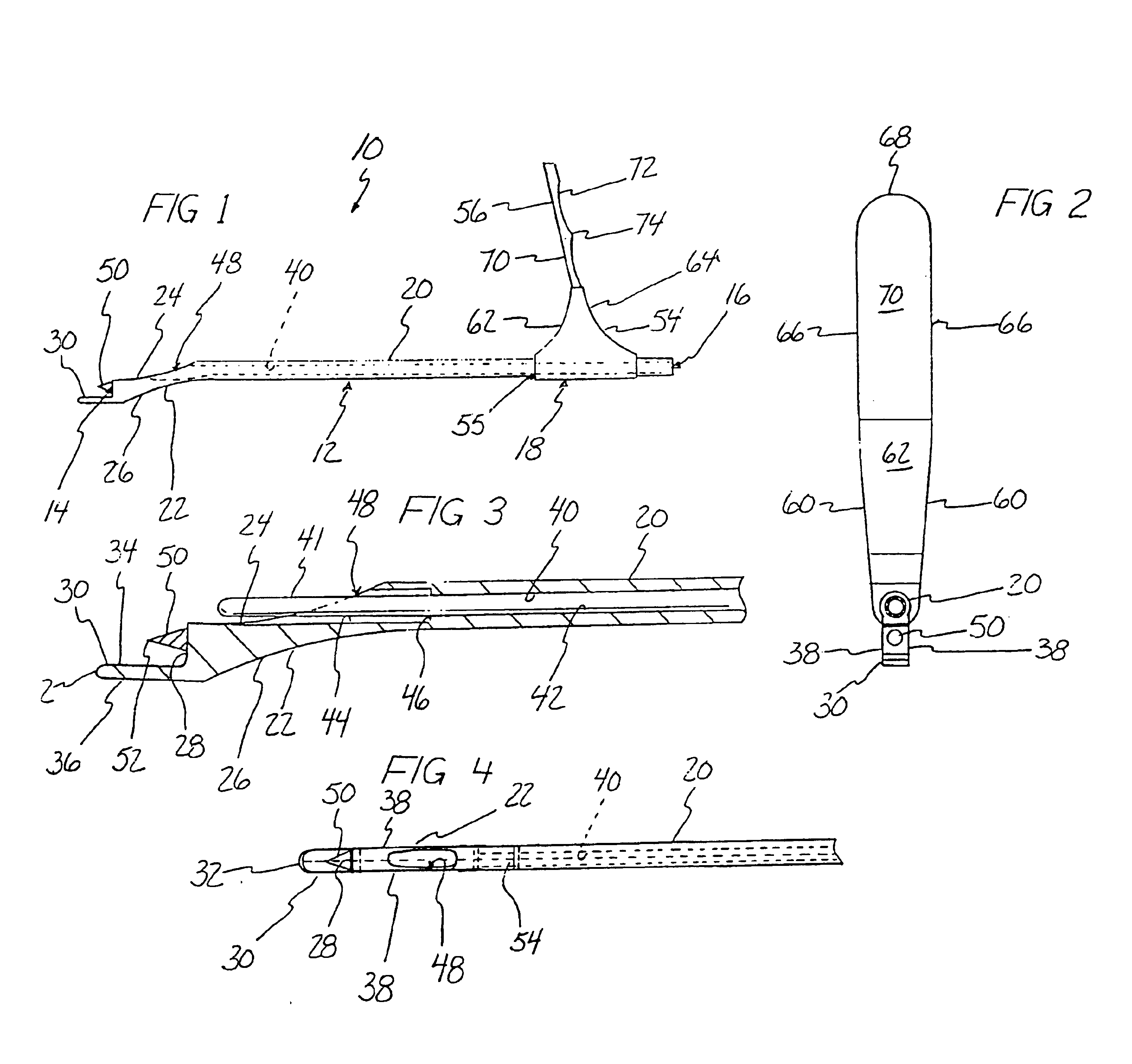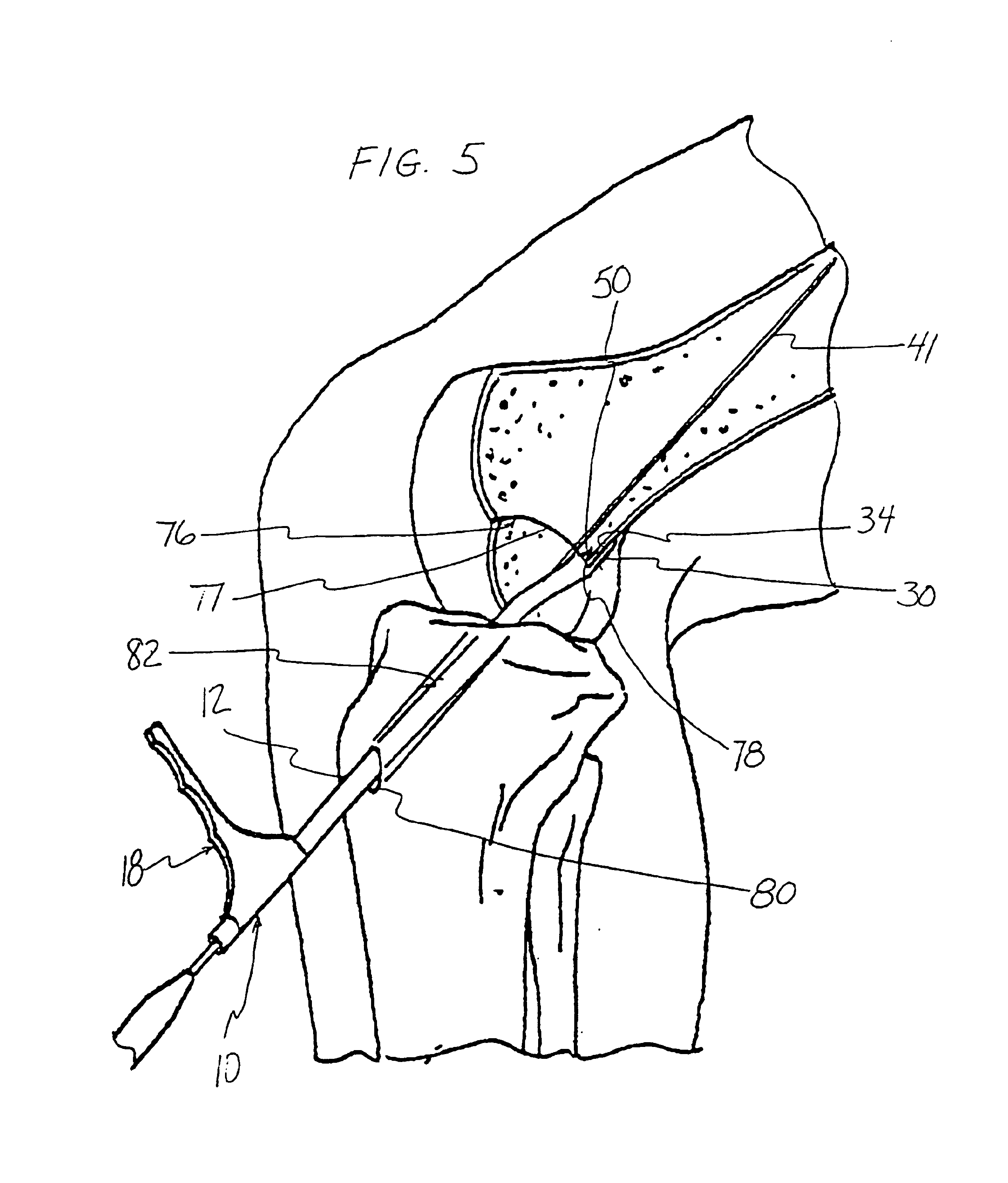Methods of precisely forming bone tunnels in cruciate ligament reconstruction of the knee
a technology of cruciate ligament and bone tunnel, which is applied in the field of surgical instruments, can solve the problems of increasing patient discomfort, increasing invasiveness and trauma, and prolonging hospitalization and rehabilitation tim
- Summary
- Abstract
- Description
- Claims
- Application Information
AI Technical Summary
Benefits of technology
Problems solved by technology
Method used
Image
Examples
Embodiment Construction
A femoral guide according to the present invention is shown at 10 in FIG. 1 and includes a body or probe 12 having a distal end 14, a proximal end 16 and a longitudinal axis and a handle 18 mounting the proximal end 16 of the body 12. The body 12 is preferably made of stainless steel and includes an elongate, cylindrical member or tube 20 terminating proximally at proximal end 16 and a tip 22 distally joined to the cylindrical member 20, the cylindrical member 20 having a longitudinal axis coaxially aligned with the longitudinal axis of the body 12. The tip 22 extends angularly, distally from the cylindrical member 20 and includes an arcuate surface 24 extending distally from a wall of the cylindrical member 20 with an inward curvature and an opposed arcuate surface 26 extending distally with an inward curvature from a wall of the cylindrical member 20. The arcuate surface 24 terminates distally at an end wall 28 at the distal end 14, the end wall 28 having a planar surface disposed...
PUM
 Login to View More
Login to View More Abstract
Description
Claims
Application Information
 Login to View More
Login to View More - R&D
- Intellectual Property
- Life Sciences
- Materials
- Tech Scout
- Unparalleled Data Quality
- Higher Quality Content
- 60% Fewer Hallucinations
Browse by: Latest US Patents, China's latest patents, Technical Efficacy Thesaurus, Application Domain, Technology Topic, Popular Technical Reports.
© 2025 PatSnap. All rights reserved.Legal|Privacy policy|Modern Slavery Act Transparency Statement|Sitemap|About US| Contact US: help@patsnap.com



